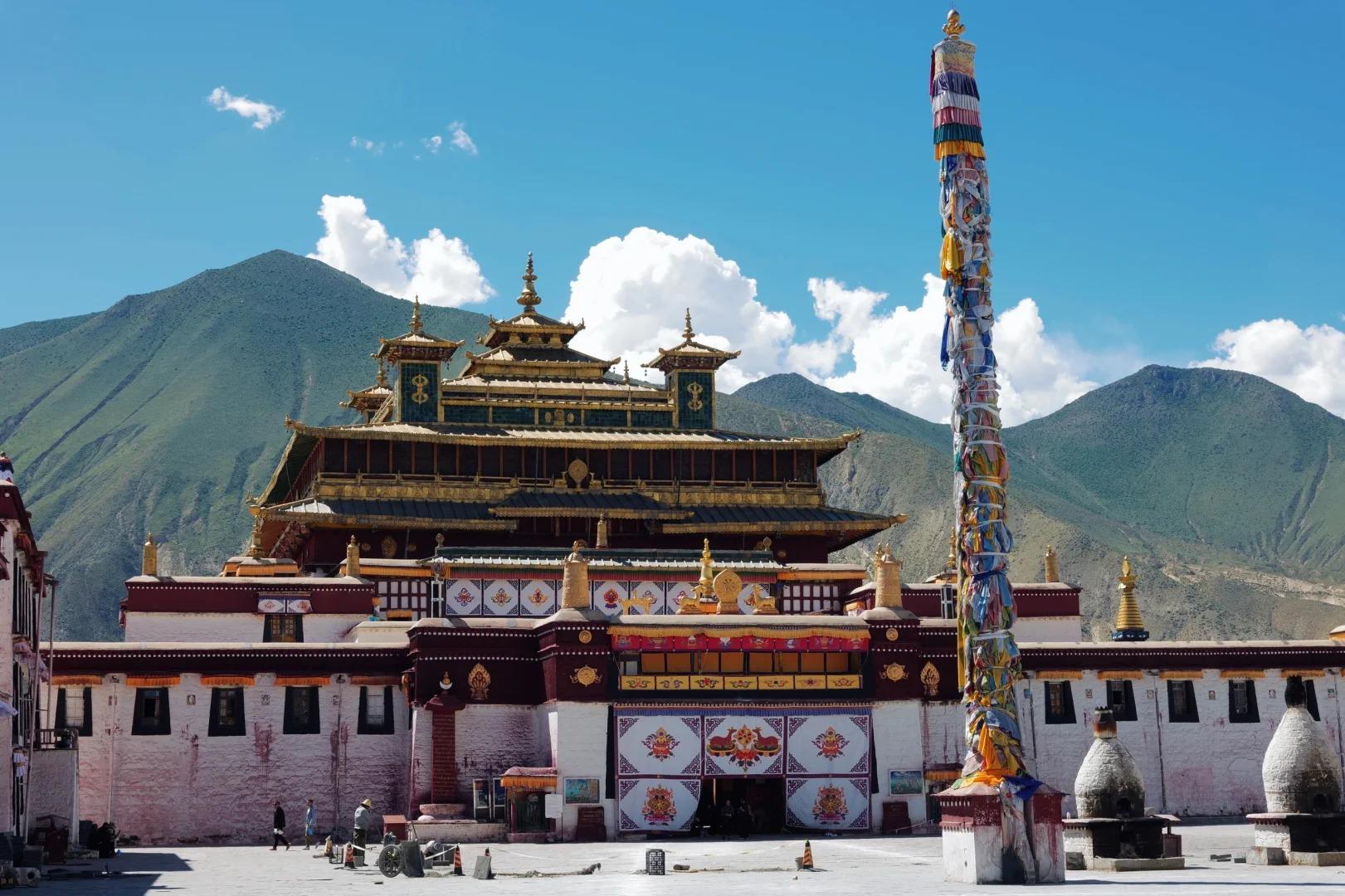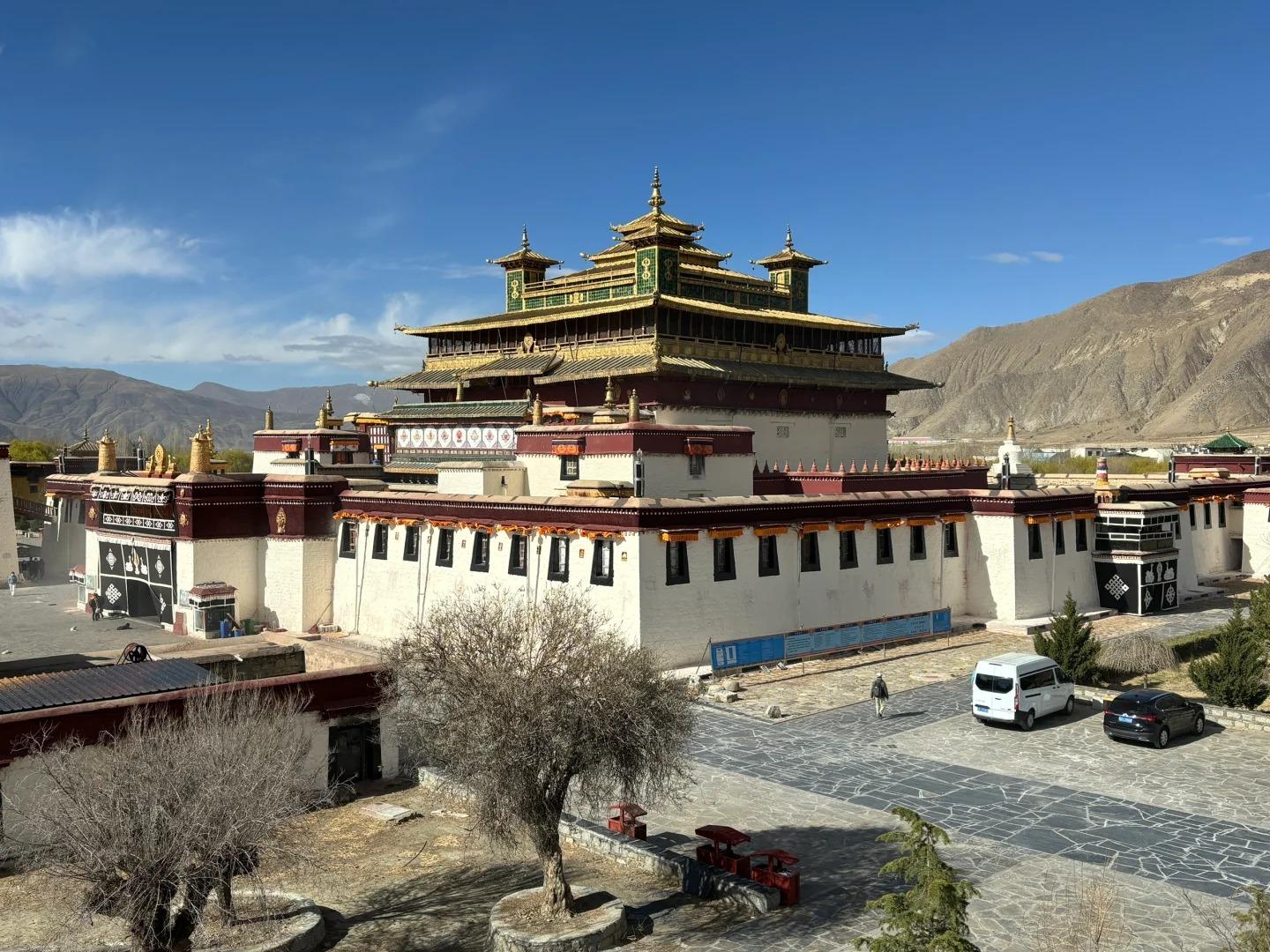Visiting Information
| Information | Details |
|---|---|
| Chinese Name | 桑耶寺 (Sāngyě Sì) |
| Location and Address | Dranang County, Lhoka Prefecture, Tibet Autonomous Region, China |
| Opening Time/Hours | 9:00 AM – 5:00 PM daily |
| Entrance Fee | 50 CNY for adults |
| How to Get There | By Bus: No direct public bus available By Taxi: About 2 hours drive from Lhasa city center (No metro service in Lhasa or Samye) |
| Best Time for Visit | May to October, especially during the Samye Festival (usually in June) |
| Contact Info | Phone: +86 891 6280059 |
Overview
Samye Monastery, located in Dranang County of Lhoka Prefecture in Tibet, is renowned as the first Buddhist monastery built in Tibet. Founded in the 8th century during the reign of King Trisong Detsen, Samye holds immense historical, cultural, and religious significance. Its unique architecture, blending Tibetan, Chinese, and Indian styles, reflects the diverse influences on Tibetan Buddhism. As a center of Buddhist learning and Tibetan culture for over a millennium, Samye continues to be an important pilgrimage site and tourist attraction.
Historical Background
Samye Monastery was founded around 775-779 CE under the patronage of King Trisong Detsen, with the guidance of the Indian Buddhist master Padmasambhava (Guru Rinpoche) and the scholarly abbot Śāntarakṣita. Its establishment marked the official introduction of Buddhism to Tibet and played a crucial role in the development of Tibetan Buddhist traditions. The monastery became the site of the famous “Council of Lhasa” or “Samye Debate” in 792-794, where Indian and Chinese Buddhist traditions were debated, ultimately leading to the adoption of Indian Buddhism as the primary influence on Tibetan Buddhism. Throughout its history, Samye has undergone several reconstructions due to fires, earthquakes, and political upheavals, but it has maintained its significance as a spiritual and cultural landmark.
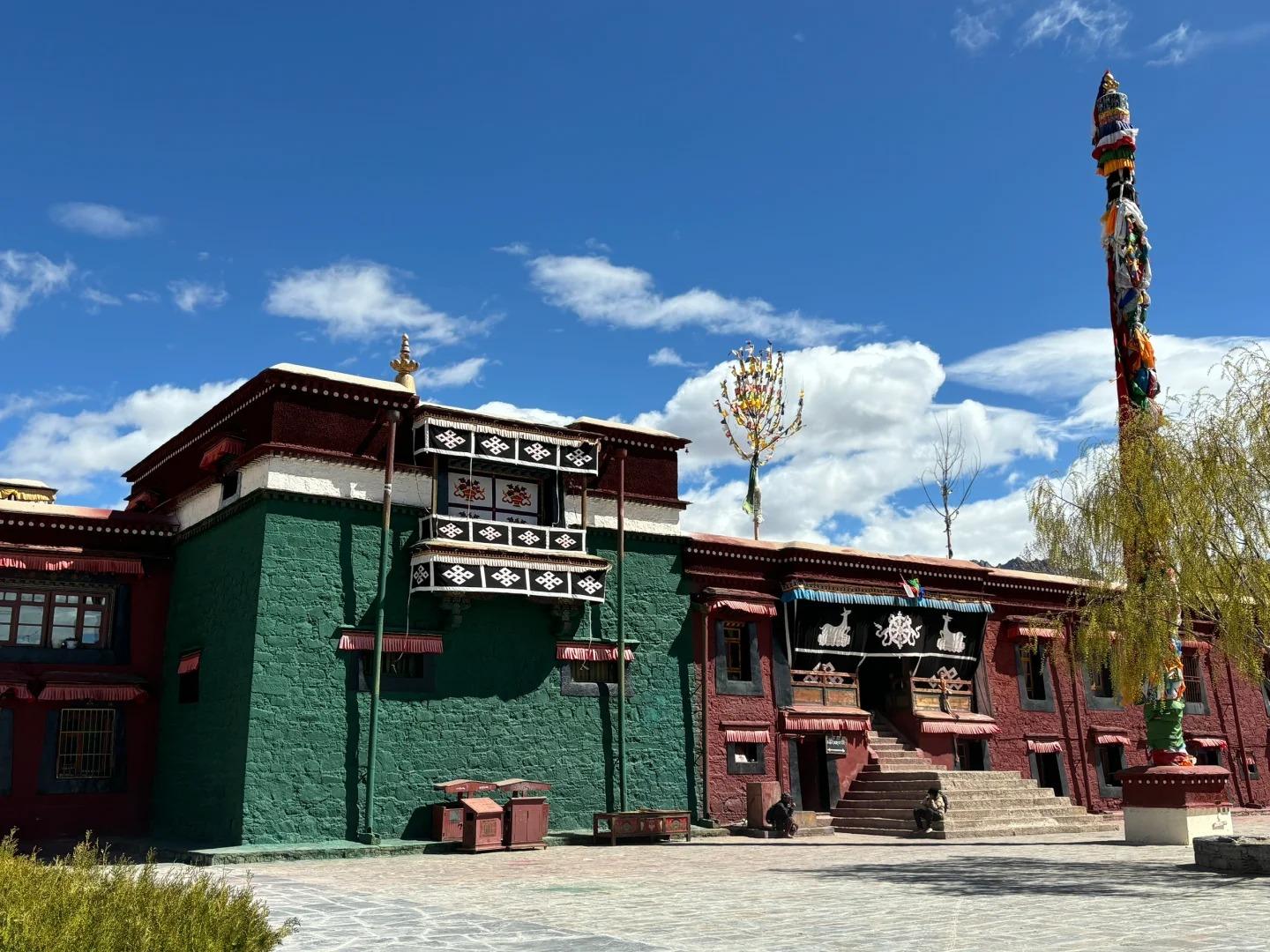
Architectural Features
- Utse Main Temple: The central building of Samye Monastery is the Utse, designed to represent Mount Meru, the cosmic mountain in Buddhist cosmology. This four-story structure features Tibetan, Chinese, and Indian architectural elements, symbolizing the unity of these cultures in Tibetan Buddhism. The temple houses important Buddhist statues and murals, with each floor dedicated to different aspects of Buddhist teachings and deities.
- Four Lingshi Temples: Surrounding the Utse are four temples representing the four continents in Buddhist cosmology. These temples, positioned at the cardinal points, each have distinct architectural styles and house various Buddhist artifacts and artworks. They play a crucial role in the overall mandala-like layout of the monastery complex.
- Sun and Moon Temples: These two smaller temples, located to the east and west of the Utse, represent celestial bodies in Buddhist cosmology. The Sun Temple, with its circular shape and red color, and the Moon Temple, with its semicircular shape and white color, add to the symbolic layout of the monastery and house unique religious artifacts.
- Outer Wall and Gates: The entire monastery complex is surrounded by a circular wall, representing the outer ring of the Buddhist universe. The wall features 1,008 chortens (stupas) and has four elaborately decorated gates at the cardinal points, each with its own symbolic significance in Buddhist teachings.
Cultural Importance
Samye Monastery holds paramount importance in Tibetan culture and Buddhism. As the first Buddhist monastery in Tibet, it symbolizes the official introduction and establishment of Buddhism in the region. The monastery has been a center of religious learning, philosophical debates, and cultural preservation for over a millennium. It houses numerous sacred texts, including many rare and ancient manuscripts, making it a treasure trove of Tibetan Buddhist literature. The annual Samye Festival, featuring the unveiling of a giant thangka and ritual dances, attracts thousands of pilgrims and showcases living Tibetan traditions. Samye’s unique architecture and artwork also represent the synthesis of Tibetan, Chinese, and Indian cultural influences, reflecting the cosmopolitan nature of early Tibetan Buddhism.
Surrounding Attractions
- Yambulakhang Palace: Located about 30 kilometers southwest of Samye, Yambulakhang is considered the oldest building in Tibet. This ancient fortress-like structure, perched atop a hill, offers panoramic views of the Yarlung Valley. It’s associated with the legendary first Tibetan king, Nyatri Tsenpo, and provides insight into pre-Buddhist Tibetan history and architecture.
- Trandruk Monastery: Situated in Nedong County, about 50 kilometers from Samye, Trandruk is one of the earliest Buddhist monasteries in Tibet. It’s famous for its pearl thangka of Chenrezig (Avalokiteshvara) and contains important relics from various periods of Tibetan history. The monastery’s location offers beautiful views of the surrounding mountains and valleys.
- Chim-puk Hermitage: Located in the hills north of Samye, Chim-puk is a complex of meditation caves associated with Guru Rinpoche and other important figures in Tibetan Buddhism. The site offers a glimpse into the ascetic traditions of Tibetan Buddhism and features stunning natural scenery. The challenging hike to reach the hermitage is rewarded with serene surroundings and spiritual atmosphere.
- Yarlung Tsangpo River: The mighty Yarlung Tsangpo River flows near Samye Monastery. This river, which becomes the Brahmaputra in India, is not only of geographical importance but also holds cultural and spiritual significance for Tibetans. The river valley offers opportunities for scenic drives, picturesque views, and understanding the role of rivers in Tibetan life and mythology.
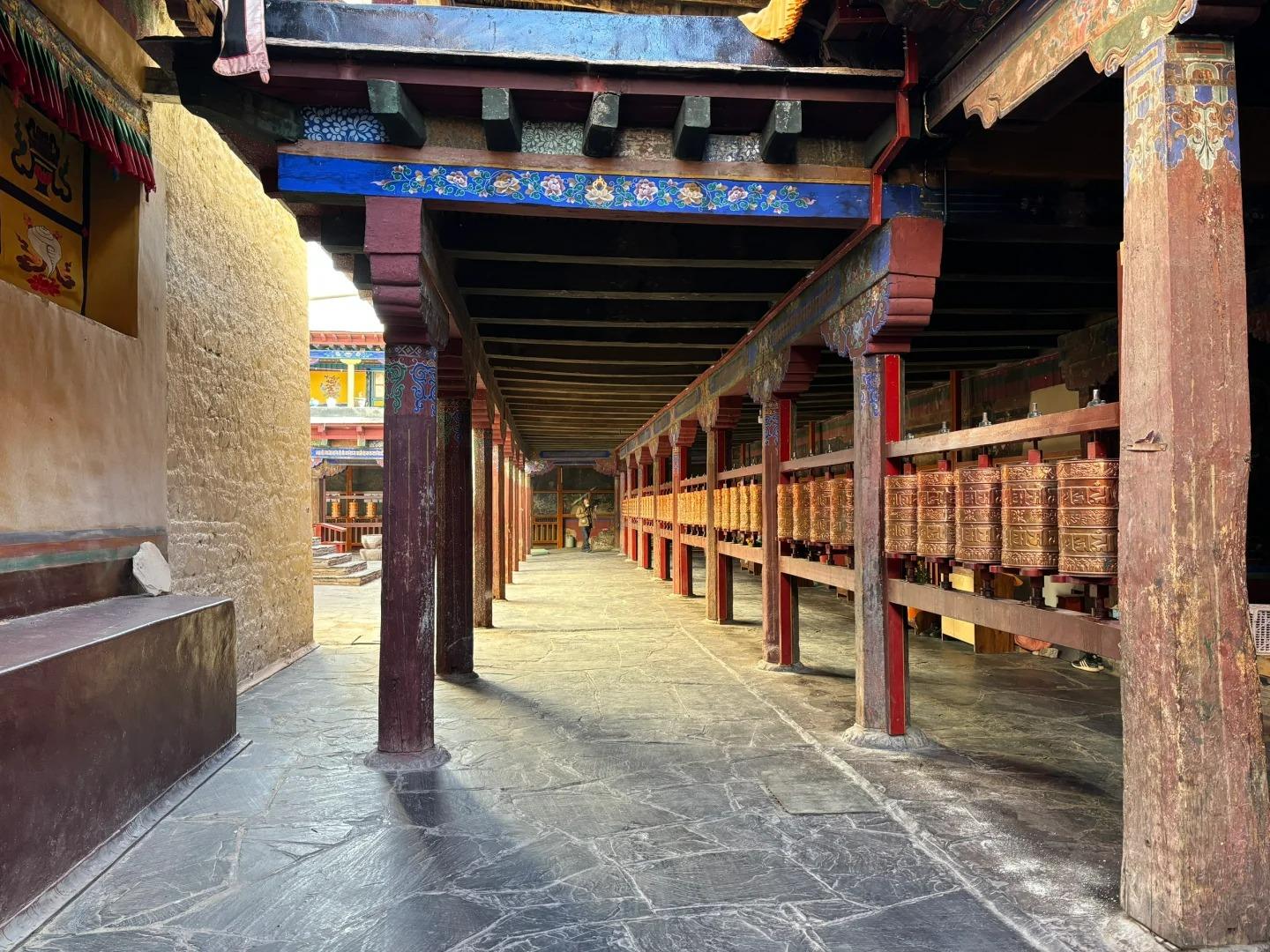
Photography Opportunities
- Architectural Details: Samye’s unique blend of Tibetan, Chinese, and Indian architectural styles provides endless opportunities for detail-oriented photography. Focus on the intricate carvings, colorful murals, ornate doorways, and the contrast between the golden roofs and white walls. The symbolic layout of the monastery complex also offers interesting compositional possibilities.
- Panoramic Views: The surrounding Yarlung Valley offers stunning vistas that make for excellent landscape photography. Climb the nearby Hepo Ri hill for a bird’s-eye view of the entire monastery complex set against the backdrop of mountains and the winding Yarlung Tsangpo River. Early morning or late afternoon light can create dramatic shadows and colors.
- Monastic Life: Capture the daily routines of monks, from prayer sessions to debates and ritual ceremonies. The annual Samye Festival, with its colorful ceremonial dances and the unveiling of the giant thangka, provides unique opportunities to photograph Tibetan Buddhist traditions in action. Always be respectful and ask permission before photographing individuals.
- Cultural Artifacts: Inside the various temples, you’ll find a wealth of Buddhist statues, thangkas, and ritual objects. While photography may be restricted in some areas, where allowed, these artifacts offer opportunities to capture the rich artistic traditions of Tibetan Buddhism. Pay attention to lighting and detail to showcase the intricate craftsmanship.
Modern Importance
- Religious Center: Despite historical challenges, Samye Monastery continues to function as an active center of Tibetan Buddhism. It plays a crucial role in preserving and transmitting Buddhist teachings, hosting religious ceremonies, and training new generations of monks. The monastery’s ongoing religious activities contribute to the continuity of Tibetan Buddhist traditions in the modern world.
- Cultural Preservation: As a repository of ancient texts, artworks, and architectural styles, Samye Monastery is vital in preserving Tibetan cultural heritage. Ongoing restoration and conservation efforts at the monastery contribute to maintaining Tibet’s historical legacy, attracting scholars, conservationists, and cultural enthusiasts from around the world.
- Tourism and Economic Impact: Samye has become an important destination for both pilgrims and tourists, contributing significantly to the local economy. The influx of visitors has led to the development of infrastructure and services in the area, providing economic opportunities for local communities while also raising awareness about Tibetan culture and history on a global scale.
- Educational Resource: The monastery serves as a living museum and educational center, offering insights into Tibetan history, art, and religious practices. It provides opportunities for both Tibetans and international visitors to learn about the rich cultural and spiritual traditions of Tibet, fostering cross-cultural understanding and dialogue in an increasingly interconnected world.
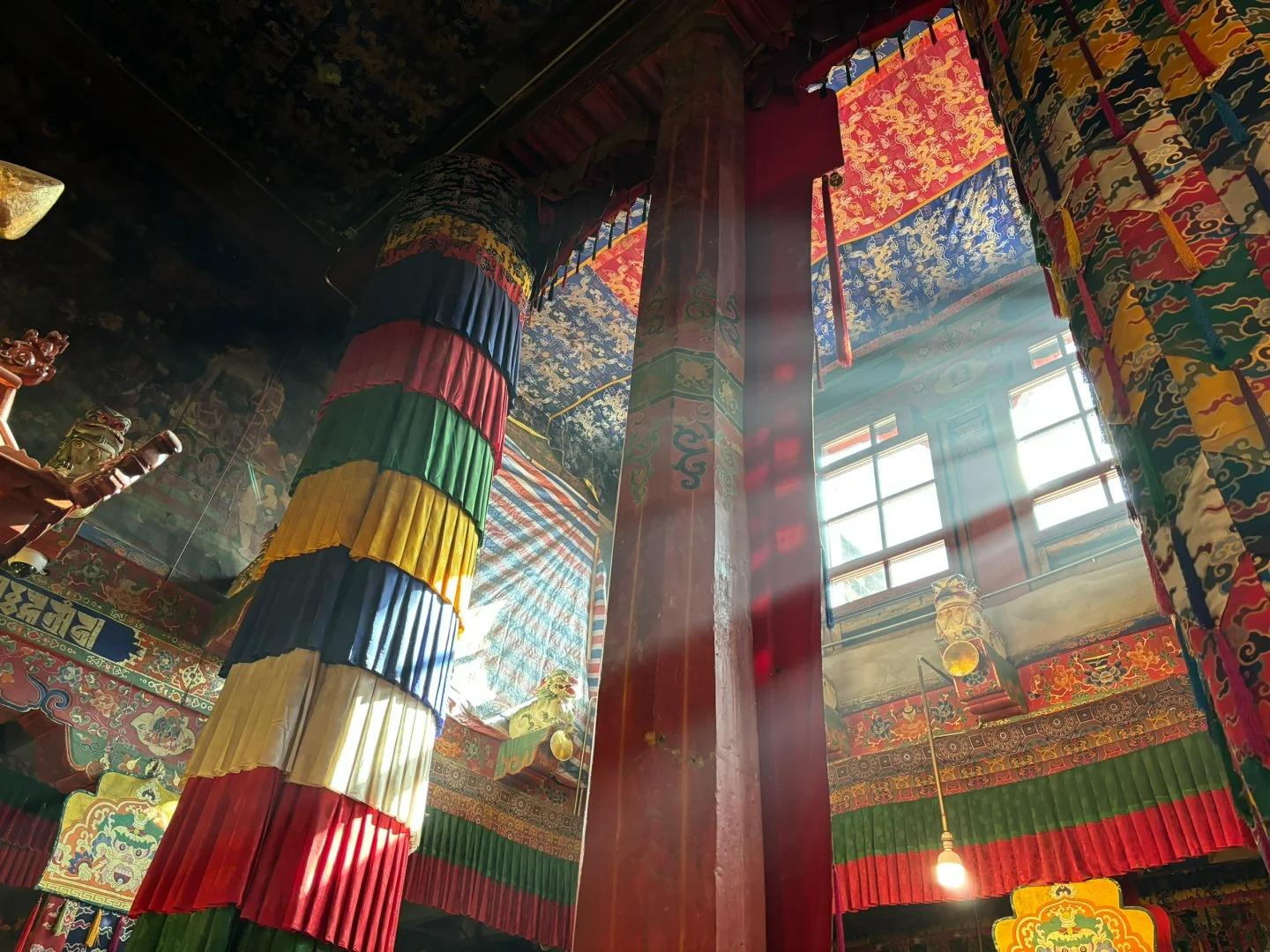
FAQ
- What is Samye Monastery famous for?
Samye Monastery is famous for being the first Buddhist monastery built in Tibet, its unique mandala-like layout, the blending of Tibetan, Chinese, and Indian architectural styles, and its historical significance in the establishment of Buddhism in Tibet. - What’s inside Samye Monastery?
Inside Samye Monastery, visitors can find the central Utse temple, four Lingshi temples representing the four continents, Sun and Moon temples, numerous Buddhist statues, ancient murals, religious artifacts, and a vast collection of Tibetan Buddhist scriptures. - Is Samye Monastery free?
No, Samye Monastery is not free. There is an entrance fee of 50 CNY for adults. - Is Samye Monastery worth visiting?
Yes, Samye Monastery is definitely worth visiting. Its historical significance, unique architecture, rich cultural heritage, and beautiful surroundings make it a must-see destination for those interested in Tibetan history, Buddhism, or cultural exploration. - What to do in Samye Monastery?
At Samye Monastery, you can:
1. Explore the main Utse temple and surrounding temples
2. Observe or participate in prayer sessions
3. Walk the kora (circumambulation) path around the monastery
4. Visit the library to see ancient Buddhist texts
5. Climb nearby Hepo Ri hill for panoramic views
6. Learn about Tibetan Buddhist art and iconography
7. Join a guided tour to understand the monastery’s history and significance
8. Participate in the Samye Festival if visiting during the event (usually in June)
9. Explore the surrounding Yarlung Valley - How do I get to Samye Monastery in the local city?
From Lhasa, you can reach Samye Monastery by:
1. Organized tour: Many local travel agencies offer day trips or multi-day tours that include transportation
2. Hired vehicle or taxi: It’s about a 2-hour drive from Lhasa city center
3. There is no direct public bus service to Samye Monastery
Note that neither Lhasa nor Samye has a metro system. - How to visit Samye Monastery?
To visit Samye Monastery:
1. Check the opening hours (usually 9:00 AM – 5:00 PM daily)
2. Purchase tickets at the entrance
3. Consider hiring a local guide for better understanding of the site
4. Dress modestly and respectfully
5. Be mindful of altitude as Samye is at about 3,540 meters elevation
6. Respect religious customs and photography restrictions
7. Allow at least 2-3 hours for your visit
8. Visit in the morning to see more monastic activities
9. Remember to bring your passport, as it may be required for entry
10. Consider acclimatizing in Lhasa for a few days before visiting due to the high altitude
11. If possible, plan your visit during the annual Samye Festival for a unique cultural experience


